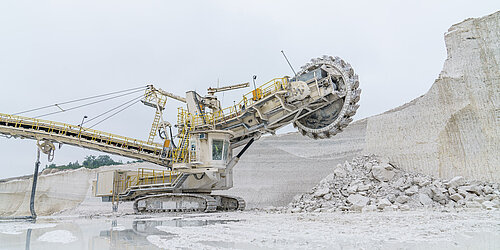How cement is produced climate-neutral
As an essential supplier of construction materials, the cement industry also has a key role to play in climate change mitigation and resource conservation. Cement producers in Germany are rising to this challenge, and working hard to achieve the decarbonisation of their products and processes. In recent years, they have already adopted an extensive set of measures for climate change mitigation. Since 1990, this has resulted in the reduction of carbon emissions by about a quarter. However, the cement industry faces several obstacles as it tries to reduce these further. The process-related emissions for producing clinker are particularly problematic, as these cannot be reduced with current technology. To achieve climate neutrality in a cement plant, a range of different measures for decarbonisation will need to be implemented. The following infographic illustrates the various options.
Copyright: KEI
Options for optimising decarbonisation
Additive substitution to reduce clinker input
Option 1a/b: The admixture of additives such as recycled materials, slag sand or fly ash in the crusher and mill (2) or in the cement mill (8) helps to reduce the amount of clinker used in the end product, thus leading to a reduction in the overall process-related emissions. Treated building waste can be used to replace some of the aggregate – this is then referred to as ‘resource-saving cement’ (R-cement).
Use of alternative fuels
Option 2: Defossilisation of the rotary kiln can be achieved by using alternative, GHG-neutral fuels.
Electrification of plant components
Option 3a/b: Electrification of the rotary kiln (6) and calciner (5) can result in the avoidance of fuels and an optimisation of the carbon emissions produced by the calciner.
Capture technologies for unavoidable carbon emissions
Option 4: Technologies for the capture of the process-related carbon emissions can ideally be utilised with option 3a to achieve as much as a 95 percent decarbonisation of cement production. The captured CO2 can be stored or used elsewhere.
It should be emphasised that all options for optimisation should be prioritised before the capture of unavoidable emissions is taken into consideration. Steps to reduce the proportion of clinker must be taken first, and fuel should be decarbonised by the use of fuels from alternative sources or by electrification. Capture is therefore an option that should be implemented alongside other options and also only ever used to handle the unavoidable emissions that are left over.
The future belongs to climate-neutral cement production
Cement recipes can vary depending on the amount of clinker substitutes utilised in the mix. The main differences between conventional and modified recipes are the reduction of carbon emissions and the setting time for construction, which is typically twice as long. However, this disadvantage can be compensated for by organisational measures in construction planning. As these climate-neutral recipes have only recently come onto the market, building companies do have some doubts about using them. The lack of acceptance is therefore still due to the lack of extensive experience compared to conventional cement.
An infrastructure for renewables as a basic requirement
To implement these alternative methods, regulatory and economic frameworks need to be set up – these will offer companies the necessary level of investment security and planning certainty. In technical terms, the first step is to safeguard the availability of green electricity by expanding renewable energy sources. To promote the use of capture technologies, the expansion of a reliable infrastructure for the transportation, storage and use of CO2 is required.
The available capture technologies have already achieved an impressive technology readiness level. Under certain circumstances, they will be available to a wider range of industries over the next 10 to 15 years. This will require pilot and field testing plants to be set up as soon as possible. Another key area requiring further research is in the development of technical expertise for the electrification of plant components and in the investigation of new materials for reducing clinker proportions.
Readiness to invest in technologies
Innovative technologies capable of converting plant systems have not yet reached market maturity, and most are currently being implemented with grant funding as part of research and development projects. Accordingly, the readiness of individual companies to contribute their own investment capital plays a decisive role here. Other policymaking and regulatory instruments for safeguarding investments – such as climate change mitigation contracts – are also needed.
Contact
Bianca Dornisch-Bund
Project Funding
0355 47889-141
Write E-Mail
How cement is produced conventionally
To date, the production of one tonne of cement typically results in the release of 600 kilograms of CO2 into the environment. This problem scenario is illustrated by our infographic on conventional cement production.
Go to infographic
